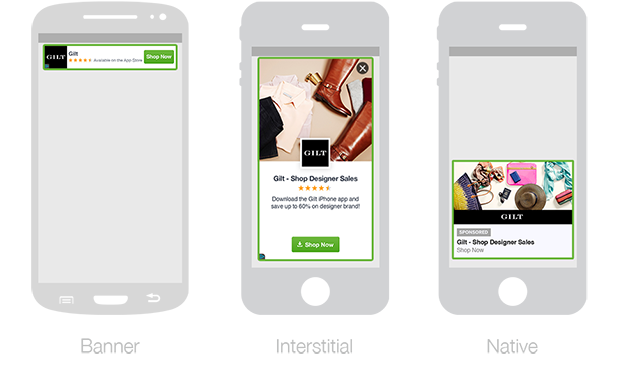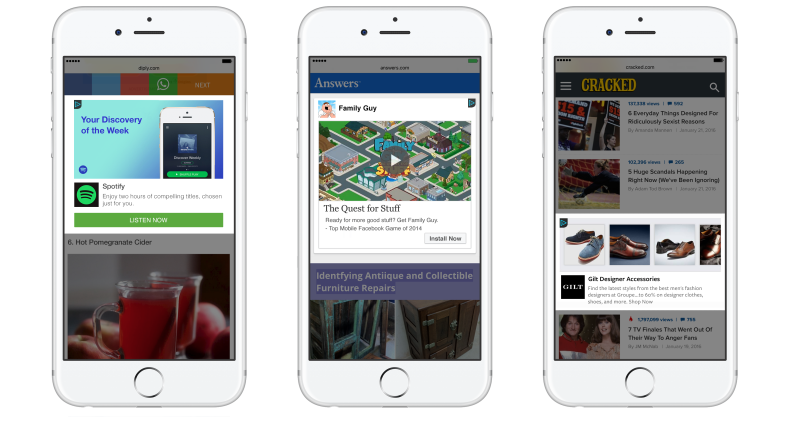Facebook announced this week they will be expanding their Audience Network system to include websites on the mobile web. For the first time, Facebook will increase its ad display by stepping outside of its own network and partnered mobile apps. The expansion of the social media giant’s ad reach (which many believe is designed to compete with Google’s extensive display network) proves two things:
- The digital ad space is constantly increasing in scope, and offering new ways for publishers to take a share of the ad revenue.
- Mobile platforms are key for advertising and the full potential of the mobile web is largely untapped. When major ads services like Google and Facebook compete for ad space, publishers stand to benefit.

Facebook is mobile first, desktop second
As the mobile Facebook user base is steadily increasing, the social network is shifting its format, UX and priorities to be mobile-optimized. Mobile Facebook ads offer several benefits over desktop ads:
- The targeting options are stronger.
- Mobile ads are often cheaper and lead to higher engagement and clicks than desktop.
- Because there’s no room for side columns, ads appear in-stream in the news feed.
- Ads are more actionable and interactive, especially for local ads, which can take advantage of coupons, check-ins, and call or get direction CTAs.
Facebook viewership, by the numbers:
- Of Facebook’s $4.5 billion third quarter 2015 revenue, 78 percent was from mobile.
- Of their billion-person daily user base, the vast majority, 894 million people, viewed Facebook on mobile.
- 727 million monthly users access Facebook exclusively on mobile devices.
- 75 percent of Facebook videos are watched on mobile devices.
- 60 percent of all shares happen on mobile.
Changes from Facebook’s ads expansion?
Think about where you see Facebook ads. Chances are you’ve seen strikingly accurately targeted, relevant and detailed ads in-network. They appear on your newsfeed as traditional ads, as well as promoted content (which use native Facebook mechanics and social context to include your friends in “stories” with paying brands). They also appear on the right-side column, and on partner apps.
Starting soon, we’ll be seeing ads around the mobile web on partner sites including: Slate, Answers.com, Elite Daily, Cracked, USA Today and Time Inc.
What are the benefits for advertisers?
- People, not cookies!
Rather than using cookie information like most web ads, these ads target people based on their Facebook profile – information that users voluntarily supply.
Brian Boland, Facebook’s VP of advertising technology explains: “We built an ad system that works on people and not on cookies. We understand the person, and that brings real value to mobile.”
- A solution to mobile monetization problems?
Many publishers have struggled to generate healthy ad revenue on the mobile web. For hosts with high mobile traffic that hope to sell space, Facebook’s mobile web ads offer efficient, effective advertising and could be a significant source of new revenue.
Facebook ended 2015 with $1 billion in revenue just from Audience Network ads and is now capitalizing on the extra room for growth: While apps running on Facebook’s Audience Network were used for only 6 percent of all time spent on mobile apps, the new networked mobile sites will significantly increase targeted Facebook ad reach, leading to more views and clicks, and an increased revenue for publishers.
- Mobile is showing no signs of slowing. Mobile design, SEO, UX, content and advertising is as healthy as ever.
Facebook’s Audience Network expansion further cements that designing for mobile and seeking to increase phone and tablet traffic should be a goal for all brands as an even more significant chunk of the online advertising realm becomes phone-friendly.
During a study conducted in June 2015, comScore found 93% of visits to 25 news publishers came through mobile Web browsers, compared with 7% of visits from apps.
– The Wall Street Journal
American Facebookers spend an average of 14 hours a month on mobile Facebook (about 335 millenia total) but spend about 87 hours a month on the mobile web – leaving about 73 monthly hours for the user to be away from the network. Now’s the time for publishers to take advantage of it.

- Get more in depth on fine-tuning your Facebook advertising, and for more on social and local optimization, here’s our checklist for starting 2016 off right. For a look at how to make the most of of the biggest changes from the past year in social media, head to our blog here.




